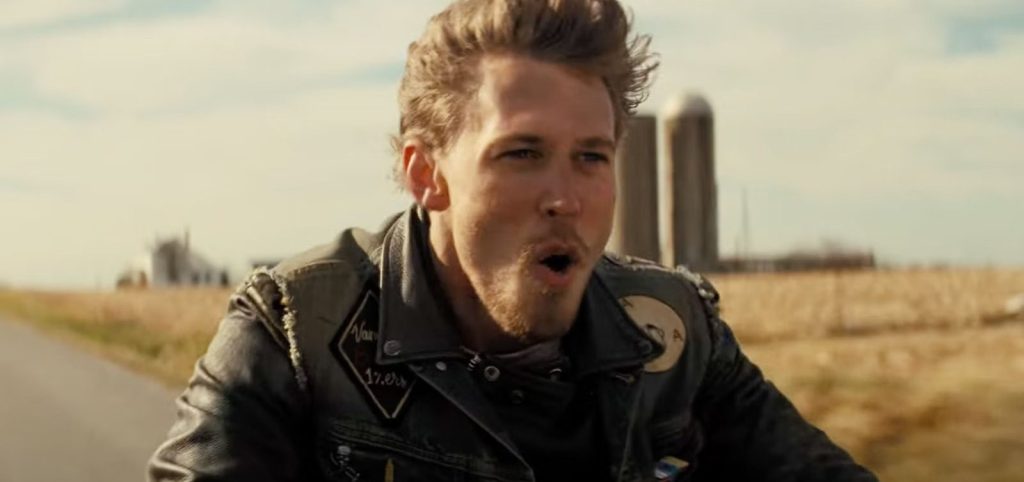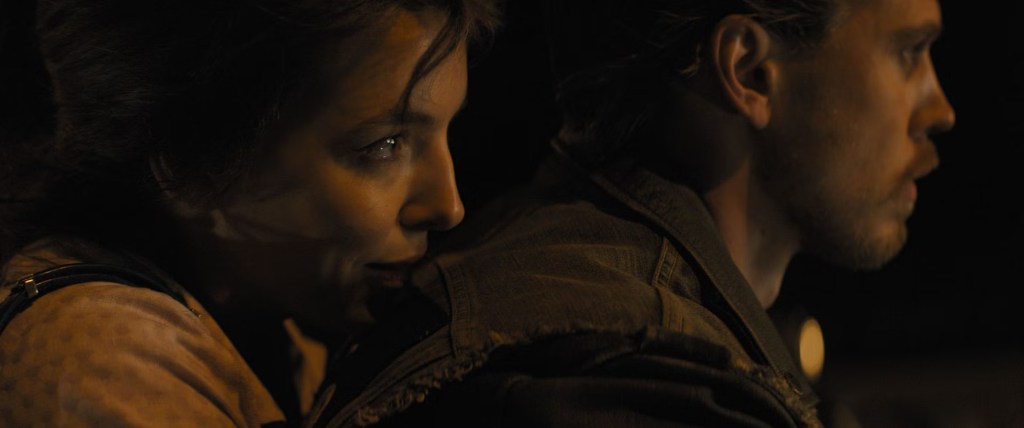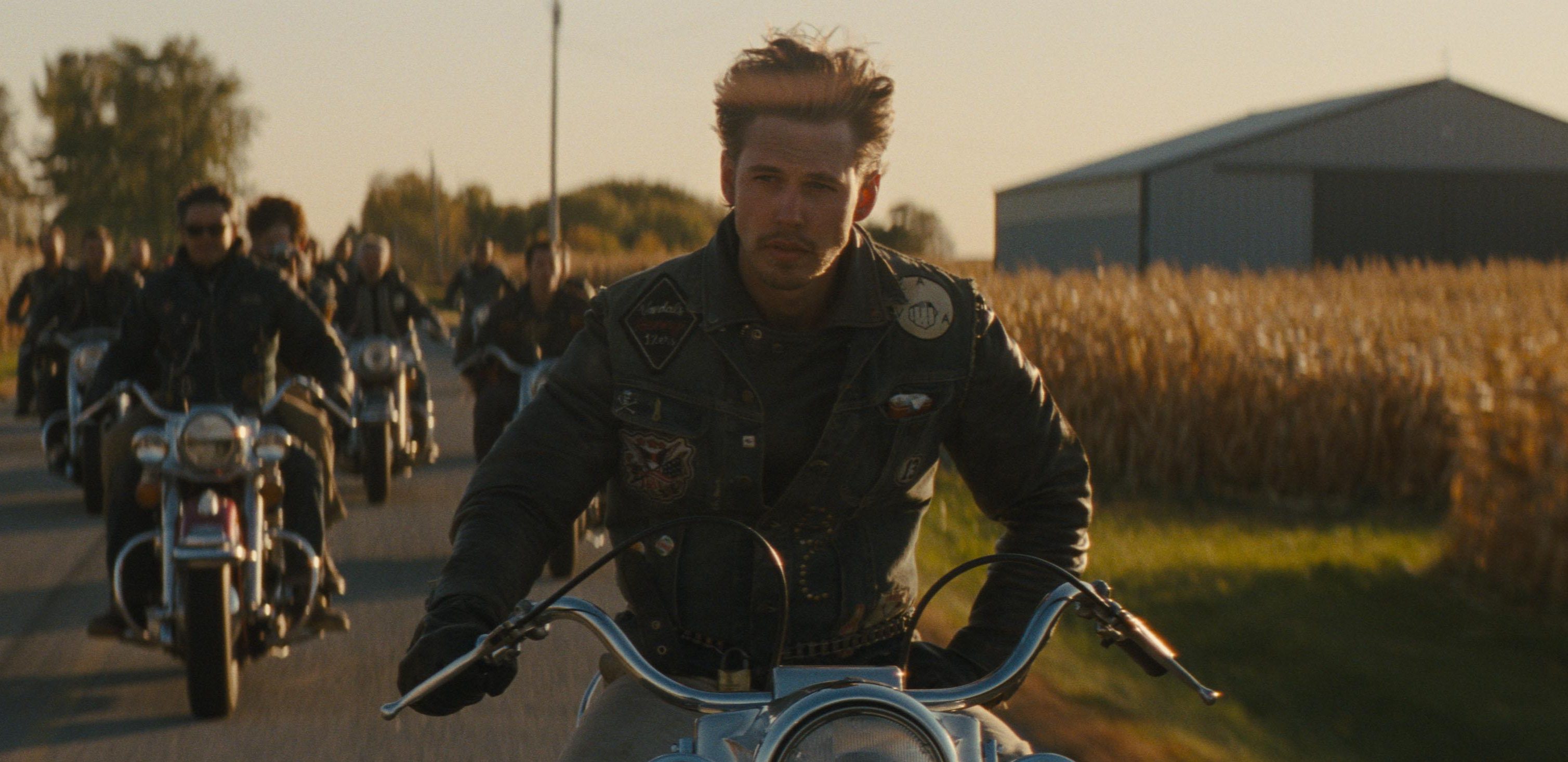Depicting a two-way struggle for a young motorcyclist’s soul, ‘The Bikeriders’ follows Benny, a new member of the Vandals Motorcycle Club who witnesses its evolution through the years from a place to indulge in an outcast lifestyle to a violent criminal organization. After meeting Kathy, a young woman at a bar, Benny decides whether his life lies with her or the club’s leader, Johnny, who envisions Benny as a more robust and better version of himself. As the club degenerates into lawlessness, his choice to leave or stay becomes pivotal to his survival and prospects for a life in a rapidly changing world.
Directed by Jeff Nichols, ‘The Bikeriders’ explores how niche subcultures like biking gangs grow and adapt to their surroundings, picking up things from the past but letting go of essential things that made them what they were in the first place. Benny’s loyalty to his club and Kathy is tested throughout the narrative. He is riddled with questions of right and wrong as the world around him changes and the club morphs from a haven for outliers in society to an underworld criminal gang. As the film paints a picture of the life of a motorcyclist living on the road, the crime thriller pokes several deeper inquiries about the authenticity of its narrative and whether it is based on a true story.
The Life of a Real Chicago Motorcycle Club is Brought to the Fore in The Bikeriders
‘The Bikeriders’ is based on the 1968 book of the same name by photojournalist Danny Lyon. Writer and director Jeff Nichols was interested in portraying the experiences recorded by Lyon while riding with the Chicago Outlaws Motorcycle Club for two years starting in 1963. He was deeply fascinated by the subculture of the outlaw bikers whose chronicles were alluring through the pictures. However, he was hesitant to glamorize the motorcycle culture within his narrative. After reading the book in the 2000s, the director spent two decades trying to nail down the approach for his film.

In an interview, Nichols told Screenrant how he came upon the book. “My brother showed it to me. My big brother Ben, who’s in a band called Lucero, he’s always been the coolest one in the family and always had the coolest music and stuff. I found it on the floor of his apartment and was immediately taken by it,” he said. “The reason I’m attracted to that book is because it’s a toolkit for how to portray a subculture. You have these photographs which are super romantic and compelling, but then you have these interviews that Danny did and that kind of strips the veneer away.”
The filmmaker continued, “They’re less romantic, they’re more realistic, and you start to see how people’s brains were working, why they were attracted to a group like this and a lifestyle like this. It really had everything I needed to portray a subculture.” When Nichols read the book, additional interviews with bikers and their girlfriends were added to the text. These candid conversations helped him form a complete picture of their mindset and humanized them. They were stark in their views about normal society and how they didn’t belong in it. Yet, at the same time, they wished they were. This intrigued Nichols, who added, “You can’t have it both ways. You don’t like normal society, but you’re kind of bummed out that they’re not accepting you. That mentality I found really interesting and it seems to resonate today.”
As the bikers explore their identity through their motorbikes and their custom designs, it is a form of self-expression and links one’s identity to a cultural niche. It places them as an outlier among folks with ordinary interests and lives. But it also relegates them to the fringes of society, where things are on the edge. Nichols found resonance in this concept with things happening in recent times. “It seems like everybody’s looking for an identity and now more than ever, I think with social media and everything else, we’re all trying to say, this is who I am,” he said. “And a lot of times we find out who we are by joining a group, which can be very powerful. It can also be a very dangerous thing, and in this movie, it’s both.”
The Bikeriders Divides the Loyalty of its Biker Protagonist
The central crux of ‘The Bikeriders’ lies in the difficulty faced by Benny, whose choice between a life with the Vandals or a life with Kathy becomes pivotal. This conceit highlights the divide, not just in the character, but the divide within the club and society itself. While initially, the club seems like a playground to explore a subset culture, ideals are corrupted once leaders, power, and money get involved. Jeff Nichols said, “Because even if you’re looking at a biker who’s all greasy and crazy looking, it’s like, ‘Yeah, but they sewed those patches on. They’re actually thinking about who they are.’

He further divulged, “But because then it starts to become a social thing, a group thing, people start to have to put rules to it and kind of this structure to it. And as soon as you start that, it starts to die.” At the heart of the film lies a love triangle, a tug-of-war for Benny’s soul. This narratively underscores the writer and director’s primary intention to present a world that is not entirely black or white. Benny’s internal conflict in a modernizing world is externalized through his bond with Kathy and his relationship with the Vandals’ leader, Johnny. They both want him to join their side, which ultimately proves challenging.
By presenting a conflict of interest between Kathy and Johnny for Benny, it neatly spotlights Nichols’ primary objective of stripping away the facade and the seductive quality of the film’s biker lifestyle and bringing it down to a level where the ugly side of humanity surfaces in a nasty way. Therefore, in this way, ‘The Bikeriders’ captures both the attractive and the unattractive parts of the Chicago Outlaws Motorcycle Club.
Read more: The Bikeriders: All Locations Where the Movie Was Filmed


You must be logged in to post a comment.